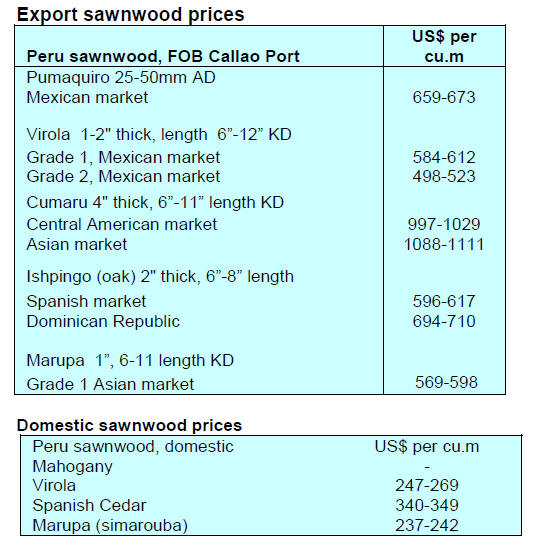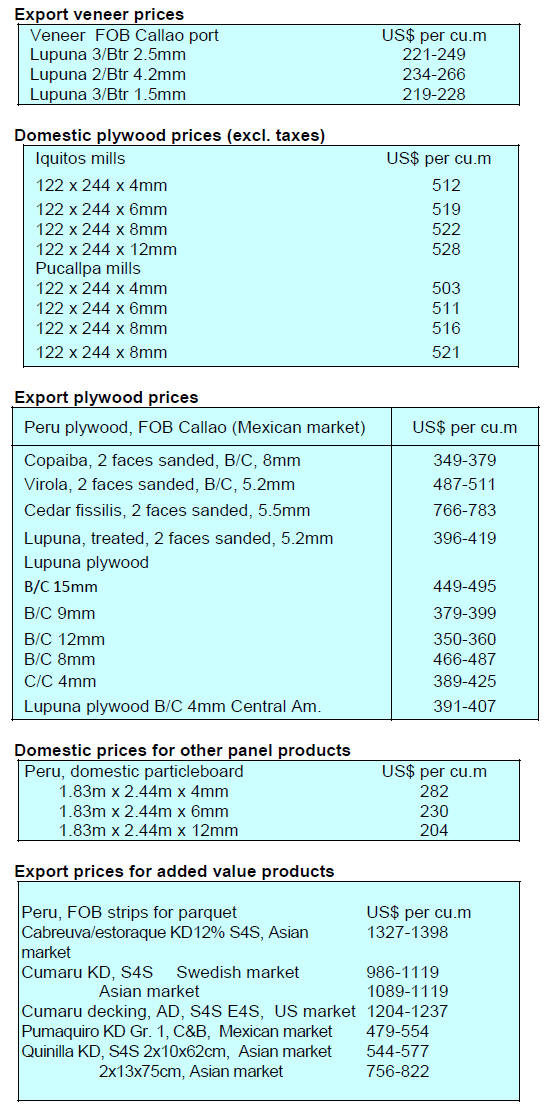The National Consultative Group, which is intended to
represent the full range of forest interests, comprises: a
Consultative Panel (6 member), a Consultative Assembly
(18 member), a Technical Facilitator, a Consultation
Coordinator and an Advisory Committee.
4.
INDONESIA
Wood product export growth to
be 7 - 8% this year
Scarcity and the high cost of containers are major
challenges for wood product exporters.The Chairman of
the Indonesian Furniture and Craft Industry Association
(HIMKI), Abdul Sobur, has been quoted as saying "Scarce
container space causes very high shipping prices and the
price has increased many times for American
destinations."
The chairperson of the Indonesian Forwarder Logistics
Association (ALFI), Yukki N. Hanafi, recently said
container shipping costs increased by 200%-300%
especially for 40 ft. containers to Australia, Europe,
Middle East and the US. Despite the container issue,
Sobur expects wood product export growth to be 7-8% this
year with a value of USD2.2 billion so he is optimistic that
the export target can be achieved as exports last year were
very successful rising to US$1.9 billion compared to
US$1.7 billion in 2019.
See:
https://www.cnbcindonesia.com/news/20210608162341-4-251509/fenomena-eksportir-ramai-ramai-teriak-ada-apa
International demand good news for upstream
companies
The chairman of the Association of Indonesian Forest
Concessionaires (APHI), Indroyono Soesilo, has said, as
of April 2021, the forest products industry achieved a 21%
increase in export earnings to US$4.42 billion.
Indroyono noted that the export performance by
downstream manufacturers was good news for upstream
producers and the reports he has seen suggest orders for
raw materials will remain firm for the next 5 months. He
added that to expand exporters need to diversify markets
so as not to rely too heavily on traditional markets.
Indroyono added there is scope for expanding markets as
in the EU Indonesia's exports are worth only US$1 billion
annually while the overall market is worth around US$52
billion. Likewise, in the US Indonesia's exports are only
around US$1-1.52 billion whereas China exports to the US
were around US$35-36 billion annually.
See:
https://ekonomi.bisnis.com/read/20210526/257/1398222/industri-hasil-hutan-jangan-bergantung-pasar-ekspor-tradisional
In related news the Ministry of Trade is encouraging light
wood exports to the European market as this market has
great potential to become a growth market for the light
wood sector.
The Indonesian Light Wood Association (ILWA) has
reported world demand for wood products is growing and,
as a raw materials for building materials and furniture,
light wood such Albasia (Albizia sp) and Jabon
(Anthocephalus cadamba) are in demand in international
markets.
See:
https://timlo.net/baca/144515/kebutuhan-kayu-duniatembus-rp-294-ribu-triliun-per-tahun/
Raising productivity and meeting product Standards
the key to competitiveness
The Ministry of Industry has praised the efforts of the
wood processing sector as it continues to recover from the
contraction in 2020. In the first quarter of this year the
industry clocked an 8 % year on year expansion.
Agus Gumiwang Kartasasmita, Minister of Industry, noted
that productivity in the domestic wood processing industry
continues to rise so the country can maintain its position
among the group of major exporters of furniture products
such as China, Germany, Poland, Italy and Vietnam.
In related news the Chairman of the Association of
Indonesian Forest Concessionaires (APHI) urged
downstream manufacturers to pay attention to meeting
applicable Standards so as to be able to compete with
imported products. He gave an example of furniture
retailers such as IKEA which can satisfy all required
Standards and be competitive.
Local furniture makers supplying the domestic market are
worried about rising competition especially as the IKEA
franchise holder, PT Hero Group, plans to almost triple the
number of IKEA outlets in Indonesia.
The Indonesia domestic furniture and homeware market is
expected to grow around 12% annually over the next four
years to US$6.98 billion by 2025.
Responded to IKEA's expansion plan in Indonesia the
Chairman of the Indonesian Furniture and Craft Industry
Association (HIMKI) Abdul Sobur said IKEA is a major
force in the furniture market and has seen an opportunity
in Indonesia.
To help protect domestic manufacturers he suggested the
government examine how the Indonesian National
Standard (SNI) and the Domestic Component Level
(TKDN) can help protect domestic industries. According
to Sobur, competitiveness is the main issue for local
manufacturers noting that last year furniture imports were
valued at US$624 million, an increase from 2019 when
they were worth US$594 million.
See:
https://www.thejakartapost.com/paper/2021/06/08/indonesianfurniture-makers-fear-losing-ground-as-ikea-expands.html
and
https://ekonomi.bisnis.com/read/20210526/257/1398223/bersaing-dengan-furnitur-impor-pemain-lokal-harus-disiplin-standar.
and
https://www.msn.com/id-id/ekonomi/bisnis/tanggapanhimpunan-industri-mebel-soal-rencana-hero-perbanyak-geraiikea/ar-AAKpUo4?ocid=BingNewsSearch
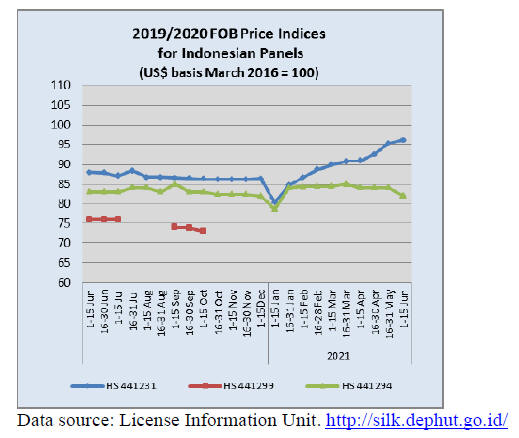
5.
MYANMAR
Sawmillers warn -
investment in retooling for added
value manufacturing risky
According to data released by Ministry of Commerce,
timber exports for the period October 2020 to March 2021
were just US$65 million.
It is unlikely that the value of timber exports up to June
2021 will have increase because of the administration’s
suspension of sawnwood export licenses and exorbitant
freight costs. In its latest sale the Myanma Timber
Enterprise advised buyers that only finished products
could be exported.
Under the present circumstances export earnings are likely
to be less than US$100 million up to the end of
September. Myanmar’s Fiscal Year starts from October to
September. Sawmillers have warned that retooling to
manufacture finished products will take time and that
investing under the current circumstances in the country is
very risky.
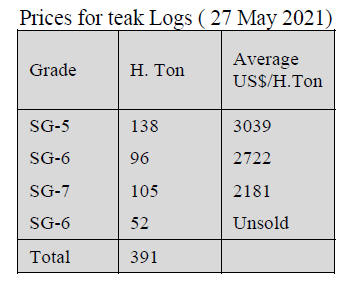
UN urges businesses in Myanmar to uphold
their
human rights responsibilities
In statement, United Nations independent rights experts
called on businesses in Myanmar to uphold their human
rights responsibilities and apply pressure on the military
junta to halt grave human rights violations against its own
people.
See:
https://news.un.org/en/story/2021/05/1091792
The UN statement reads:
“While some businesses have reiterated their public
support for the rule of law and human rights, and cut ties
with the junta in the aftermath of the 1 February coup,
many continue to engage in business with the military as if
nothing has happened, Tom Andrews, UN Special
Rapporteur on the situation of human rights in Myanmar,
and members of the Working Group on Business and
Human Rights, said in a news release.
As military leaders are intensifying their campaign of
repression, companies must act in line with the Guiding
Principles on Business and Human Rights to avoid
contributing to human rights violations, or becoming
complicit in crimes if they continue to operate in the
country, the experts highlighted.
Surya Deva, Vice-Chair of the Working Group, said that
because “the risk of gross human rights violations has
greatly increased in Myanmar, action by States and human
rights due diligence by business, and investors, should be
rapidly and proportionately heightened”.
“Businesses, both individually and collectively, should
exert the maximum leverage on the military in Myanmar
to halt what the High Commissioner for Human Rights has
said may amount to crimes against humanity”, Special
Rapporteur Tom Andrews added.”
In related news, UN Special Envoy Christine Schraner
Burgener said in a statement widespread, systemic attacks
on civilians in Myanmar orchestrated by leaders of the
military coup demand a “firm, unified and resolute
international response”.
The statement continues:
“As the world watches in horror as Myanmar's military
continues to defy calls, including by UN Security Council,
to end fundamental human rights violations and “return to
the path of democracy”, she told a closed session of the
Council that more than 520 people have been killed since
the coup began, adding that “the urgency for a solution to
this crisis could not be clearer”.
Against the backdrop of the COVID-19 pandemic, she
had warned ambassadors in a briefing earlier this month,
that the crisis was rapidly unravelling an already fragile
public health sector and risking multiple emergencies.
The UN envoy explained that lives that could be saved
under normal circumstances were being lost, a banking
collapse “appears imminent”, and shockwaves to
businesses have “toppled the supply chain while
fundamentally impacting the labour force”. Moreover, the
military’s cruelty has prompted ethnic armed groups in
Kayin and Kachin states to denounce the coup, “increasing
the possibility of civil war at an unprecedented scale”.
See:
https://news.un.org/en/story/2021/03/1088822
6. INDIA
Fears second quarter growth has been
dragged down
India’s economic growth picked up in the first quarter
2021 compared with the previous three months. Consumer
spending rose 2.7% year on year in the first quarter 2021
following a drop in the previous quarter. However,
economists are pessimistic about the second quarter after
the devastating second wave of infections.
Rising unemployment is the greatest concern as it has
mostly affected the informal economy and poorer
households.
See:
https://www.indiatoday.in/business/story/explained-howcovid-19-battered-indian-economy-during-2nd-wave-1810532-2021-06-03
Exporters did well in May
Exports continue to perform well with May export
earnings estimated at US$32 billion, up 67% year on year
and 8% up compared with May 2019. The May 2021
growth can be attributed to the low base in 2020 the result
of the nationwide lockdown.
In other news, India's trade deficit fell to an eight-month
low in May due to reduced domestic demand for gold and
oil amid the second Covid-19 wave and lockdown
restrictions.
Calls for even more investment in housing
India experienced an exodus of migrant workers in early
2020 with as many as 50 million leaving the living
quarters provided by companies and returning to their
home areas. In April this year it happened again after a
lockdown was announced. This migration has reignited
debate about the housing gap in Indian cities.
The government has a ‘Housing for All’ plan which aims
to provide around 20 million homes but some are now
saying the numbers involved in the recent exodus suggest
the 20 million target may need revising up. Greater
investment in housing would make good economic sense
as the real estate sector contributes 7-8% to India's GDP
and more than 50 million workers depend on construction
for their living.
See:
https://www.downtoearth.org.in/blog/urbanisation/lessonsfrom-covid-19-need-better-demand-estimation-factors-toprovide-housing-for-all-77199
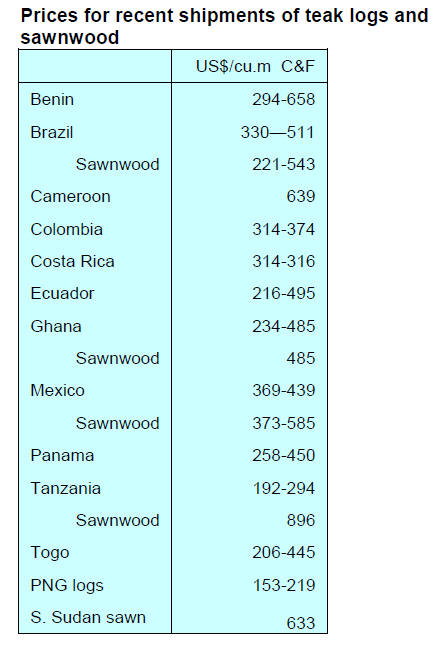
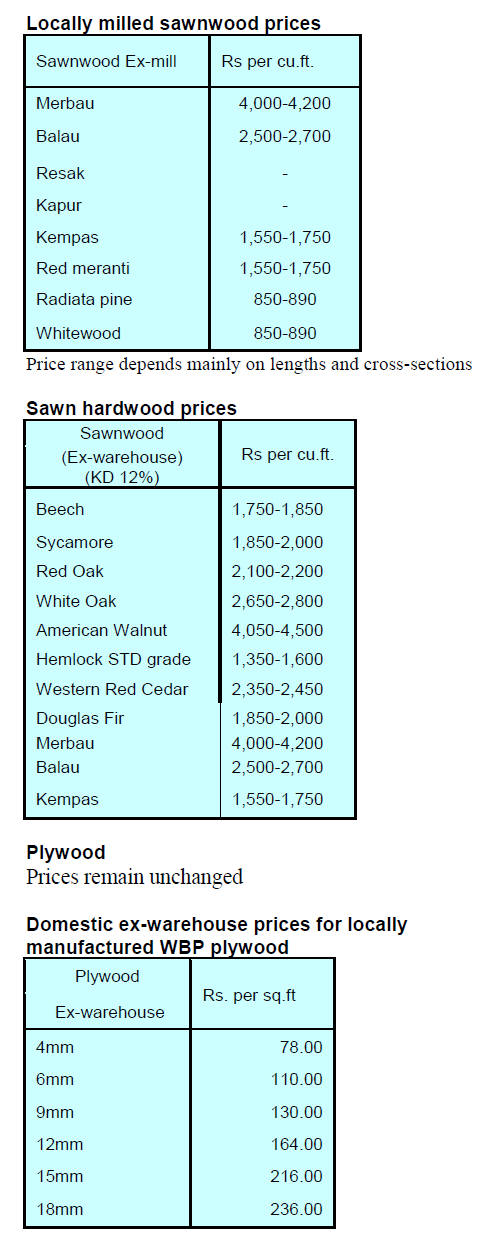
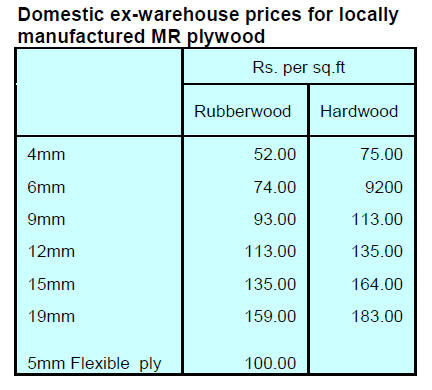
Plywood market forecast
According to IMARC Group’s latest report “Indian
Plywood Market: Industry Trends, Share, Size, Growth,
Opportunity and Forecast 2021-2026” the Indian plywood
market reached a value of INR222.5 billion in 2020.
Looking ahead, IMARC Group expects the market to
exhibit moderate growth during 2021-2026.
See:
https://manometcurrent.com/indian-plywood-market-2021-size-growth-driving-factors-demand-and-competitive-outlook/
Higher temperatures and an erratic monsoon – rise in
forest fires
After recording a seven-year low in 2020 in rural
Maharashtra's there has been a worrying rise in forst fires
this year. Data from NASA's Fire Information for
Resource Management System (FIRMS) show a steep
increase in fire counts in Thane this year. There was a
more than doubling the number of forest fires (2,477)
between 1 January and 28 March this year.
Rising temperatures and an erratic monsoon season have
led to a drying of vegetation in parts of Maharashtra
creating conditions in which fires can spread easily
according to a scientist at the Indian Institute of Tropical
Meteorology in Pune. Most fires are the result of human
activity but their frequency and impact can be exacerbated
by climatic conditions.
See:
https://www.hindustantimes.com/cities/mumbai-news/up-inflames-maha-s-saga-of-forest-fires-101617045227064.html
7.
VIETNAM
Tali imports rising
In May 2021 Vietnam’s imports of tali from Gabon
amounted to 32,300 cubic metres worth US$13.1 million,
rising 14% in volume and 14.7% in value compared to
April 2021, but dropping by 6.4% in volume and 1.1% in
value compared to May 2020
In the first 5 months of 2021 imports of tali from all
sources amounted to 158,400 cubic metres worth US$60.3
million, up 4.2% in volume and 11.5% in value over the
same period of 2020.
Prices (FOB) for tali imports
In April 2021 the average price of imported tali was
US$402.4/cu.m, down 1.8% compared to March 2021 and
up 3.2% against April 2020.
In the first 4 months of 2021 the price of tali averaged at
US$407.6 US$/cubic metres, up 6.7% over the same
period in 2020.
Suppliers of tali
In the first 4 month of 2021 imports of tali from Gabon,
Hong Kong, Nigeria, Thailand and Ghana declined year
on year while imports from Cameroon, Congo, and China
increased.
In the first 4 month of 2021 Cameroon was the largest
supplier of tali accounting for 65% of total imports at
86,700 cubic metres worth US$34.6 million, down 1.2%
in volume and 6.7% in value compared to the same period
of 2020.
Following Cameroon, Gabon was the second largest
supplier shipping 11,600 cubic metres, worth US$5.3
million, up 32.9% in volume and 30.7% in value
compared to 2020.
Hong Kong is the third supplier supplying 4,700 cubic
metres, worth US$1.6 million, up 335% in volume and
334% in value compared to 2020.
In addition, there are other countries re-exporting tali to
Vietnam with an increasing volume, including Papua New
Guinea increasing by 280.0%; Thailand by 911.3%; Ghana
by 89.4%; Laos by 96.8%; Cambodia by 1,691.6%; EU up
1,806.6% etc.
In contrast imports of tali from certain suppliers
decreased against 2020, including Cameroon dropped
by 1.2%, Congo 4.3%; China 81% in volume.
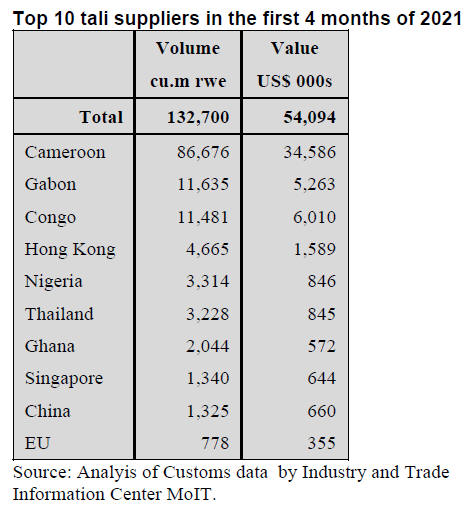
Vietnam’s export of W&WP to EU show positive
growth
In May 2021 Vietnam's export of W&WP to the EU
reached US$64 million, up 130% compared to May 2020.
In the first 5 months of 2021 W&WP exported from
Vietnam to EU amounted to US$314 million, up 45% over
the same period in 2020.
In spite of the negative impact of the Covid-19 pandemic,
Vietnam's W&WP exports to EU recorded a positive
growth rate in the first 4 months of 2021.
With the recovery of EU economic growth and the
recently concluded European Union – Vietnam Free Trade
Agreement (EVFTA) the export of W&WP from Vietnam
to EU is expected to grow even faster in the coming
months.
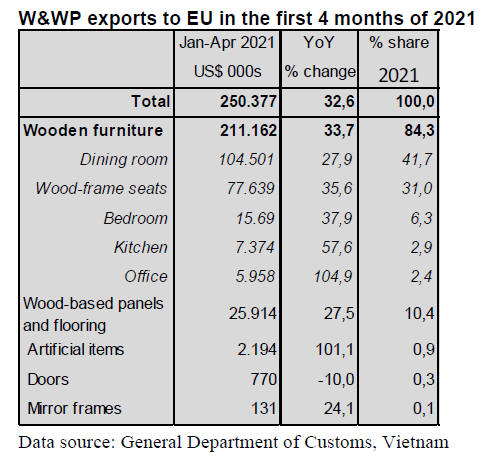
Export markets
In the first 4 months of 2021 Vietnam's W&WP export to
EU increased especially to Germany where the value f
imports was US$52.83 million, up 16% over the same
period in 2020.
Following Germany was France where imports from
Vietnam were US$47 million, up 28%, the Netherlands
US$38.9 million, up 56%, Belgium US$22 million, up
43%. Exports to Romania reached US$2.4 million, up
157% over the same period in 2020.
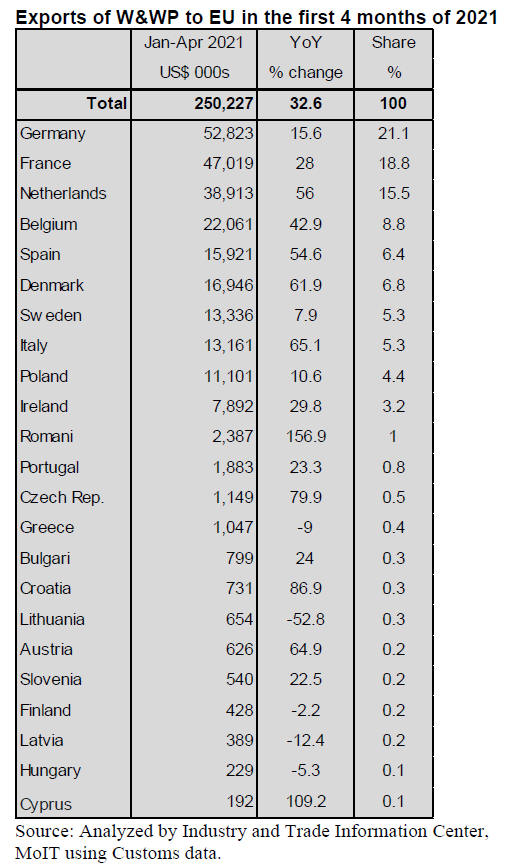
Wood product exports hit record high
Exports of W&WP plus NTFP surged 62% year on year to
reach a record high of over US$6.628 billion in the first 5
months of 2021 despite global supply chain disruptions.
Of this figure US$5.120 billion came from high valueadded
wooden furniture, up 80% against the same period
last year.
Domestic producers have adapted well to the “new
normal” by stepping up digital trade meetings and product
promotion with foreign buyers in order to boost sales, said
Deputy Minister of Agriculture and Rural Development
Ha Cong Tuan.
There is plenty of room for the global wood and furniture
market to grow, said Bui Chinh Nghia, Vice Director
General of the Vietnam Forestry Administration under the
Ministry of Agriculture and Rural Development.
Vietnam now makes up 9% of the global market he noted,
stressing that with the current growth rate Vietnam will
soon rise to the fourth or even third place among the
world’s largest exporters of wood products.
According to several foreign importers, COVID-19-
induced social distancing orders and travel restrictions
have forced people in many countries to work from home
triggering increased demand for home furniture.
Made-in-Vietnam furniture has been more and more
favoured by importers as producers have strictly complied
with rules of origin. Insiders, however, warned that rising
orders may cause trouble for Vietnamese producers as
disruptions in supply of material wood remain of concern.
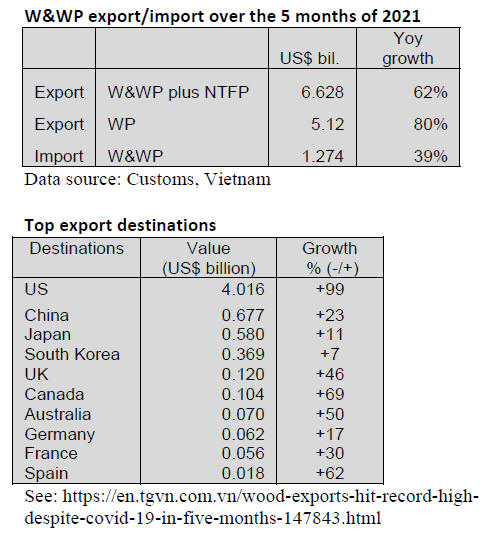
8. BRAZIL
Sustainable forest management can
supply demand in
Pará
According to the Institute of Forest and Agricultural
Management and Certification (Imaflora) Pará State, the
second largest timber producing state in Brazil, has
enough forest area to implement sustainable forest
management capable of supplying, indefinitely, its current
rate of log production.
According to an Imaflora study the state has the potential
to double its log production from 3 million to 6 million
cubic metres of roundwood a year using around 18 million
hectares of public land.
Over the past few years logging in Pará has shifted to the
regions of the Calha Norte in the Amazon River area (the
northernmost region of the Brazilian Amazon) and to the
west of the State due to the exhaustion of forests on the
former forest frontiers.
This is worrying because of the risk that forests will
continue to be logged at an accelerated pace in those
regions and possibly encroach further into pristine forests.
The study points to four actions to address this risk:
Speed up implementation of forest concessions
and make them more attractive from an economic
point of view.
Extend support from public and private entities to
communities that own forests with an interest in
forest management so that environmental and
social values are preserved.
Develop a marketing strategy which promotes
legality and emphasises preference for timber
produced under sustainable forest management.
Promote investment in technological
development in the timber processing industry to
improve the efficiency of timber production
process.
Pará has a very large potential to maintain and even
increase timber production if sustainable forest
management is further promoted.
Implemntation of New Forest Code advances
The Forest Code (Law N° 12.651/2012) established the
Environmental Rural Registry (CAR) system, an important
tool for regularising data collection. Among the advances
made has been streamlining CAR's analysis system.
The Brazilian Forest Service (SFB) and the Federal
University of Lavras (UFLA) developed a system that
automates analysis of the registration records sent by rural
producers replacing the manual recording system.
Automation will speed up inspection and make producers
with environmental liabilities (e.g. setting aside forest
protection areas, such as permanent preservation areas and
legal reserve areas) regularise their areas, thus, making
Brazil comply with the commitments assumed at the
Summit on Climate Change, that is, its goals to reduce
greenhouse gas emissions.
This new system was initially tested in the state of Amapá
and will now be implemented in the state of Paraná.
Roundwood exports
Brazil has never exported so much roundwood as in the
past two months according to the Secretariat of Foreign
Trade in the Ministry of Economy. Some 537,000 tonnes
of roundwood were shipped in April and May 2021, about
3 times more when compared to the same period in 2020.
In the first five months of the year the country has
exported 1 million tonnes, representing 116% more than
the volume exported from January to May 2020. The
revenue rose to US$84 million in the first five months, an
80% increase compared to the same period in 2020.
Bento Gonçalves furniture cluster increases exports
The furniture industry continues its recovery process that
began in the second half of 2020. The performance in the
first quarter of this year reflects an increase in demand for
furniture according to Sindmóveis (Furniture Industry
Association of Bento Gonçalves).
In the Bento Gonçalves Region, the main furniture cluster
in Brazil, revenue in the first quarter was R$710 million, a
70% growth compared to the same period of 2020. This
contributed almost 30% of the Rio Grande do Sul State
revenue.
While the growth rate is high it should be viewed with
caution as the comparison is related to the first months of
the pandemic in 2020 when March was one of the worst
periods in history for the furniture industry with a high
level of uncertainty and production restrictions.
According to the Ministry of Economy, furniture export
shipments from the Bento Gonçalves region reached
US$12.6 million in the first quarter 2021, a 33% growth
compared to the same period of 2020. The main
destinations were the United States, Uruguay, Chile, Peru,
the United Kingdom (UK), Colombia, Saudi Arabia,
Mexico, Ecuador and Bolivia.
The State as a whole exported US$54.5 million from
January to March/2021, a 35% increase compared to the
same period in 2020.
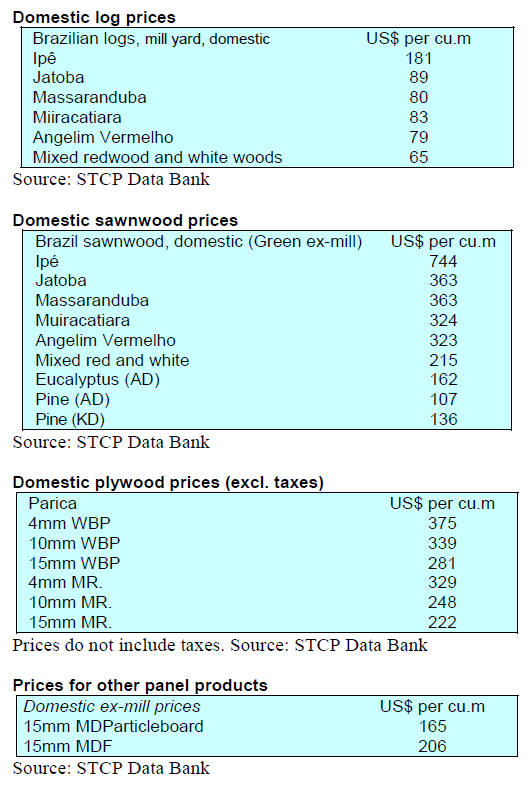
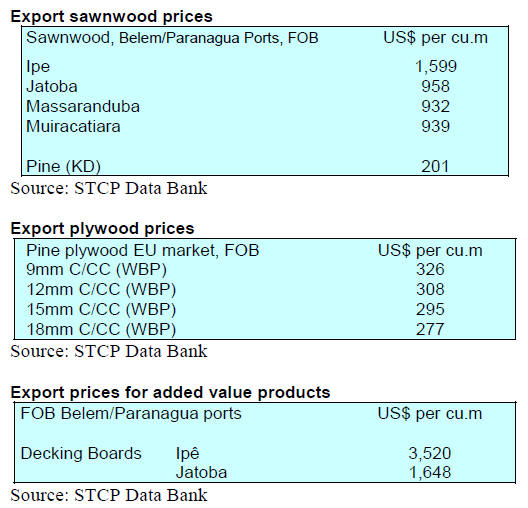
9. PERU
Online tool to verify the legal
origin of wood
The National Forest and Wildlife Service (SERFOR) has
announced progress with the construction of a ‘Control
Module of the National Forest and Wildlife Information
System of Peru (MC-SNIFFS)’, a tool that will contribute
to verifying the legal origin of wood. The system is
expected to be operational in 2022.
SERFOR, together with the Regional Forest and Wildlife
Authorities of the Amazon, is leading this development
that will allow monitoring in the forest, during
transportation and during processing and marketing.
The MC-SNIFFS system will contain information on
forest concessions, utilisation permits, management plans,
operational plans and management declarations among
others in order to provide an efficient and transparent
public service.
In addition, the MC-SNIFFS will boost the
competitiveness of the private sector and help boost
productivity in the Amazonian region.
In related news the Regional Government of San Martín
will launch a web portal for transparency and access to
forest and wildlife information. This development is
supported by SERFOR.
The portal will make it possible to quickly identify illegal
practices during the administration and management of
forest and wildlife resources. The Regional Government of
San Martín in coordination with the SERFOR Forestry
Program carried out a virtual trial to present the web portal
as an easy to use system.
Opportunities to export timber to Israel and Saudi
Arabia
Staff in Peru’s embassies in Israel and Saudi Arabia have
determined these countries represent opportunities for
wood product exporters.
Israel depends on timber imports and is a potential market
for profiled wood according to Estefany Jordán, head of
the Consular Section of the Peruvian Embassy in Israel.
This was reported during a virtual forum 'Profiled wood
market in Israel and materials for construction in Saudi
Arabia' organised by the Association of Exporters (ADEX)
and the Ministry of Foreign Affairs.
The head of the Consular Section of the Embassy of Peru
in Saudi Arabia, Rafael Vallejo, pointed out that demand
for wood products in the construction sector in that
country is huge and a good part of this demand is provided
by imports.
SERFOR approves regulations for wood products
SERFOR recently approved regulations defining a range
of wooden constructional products. These regulations
describe how these products should be made to a unified
standard.
SERFOR is coordinating with the Center for Productive
Innovation and Technology Transfer of Wood (CITE
Wood) in the Ministry of Production to conduct tests
based on the regulated products.
Additionally, SERFOR, through the Promotion and
Competitiveness Directorate, is working on the
preparation of regulations for school furniture made of
wood which will enable small and medium-sized
companies to offer products.
